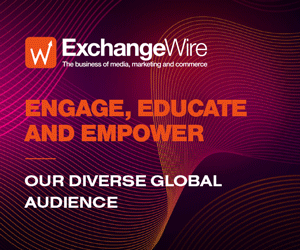Data Curation: Examining European Expansion
by on 15th Apr 2025 in News

We examine the rise of data curation, with a particular focus on its expansion in the European region. What makes it a new essential for European advertisers, and what is driving its demand?
Data Curation: A new essential for European advertisers
As the ad tech ecosystem undergoes continual transformation, data curation is becoming increasingly essential for many advertisers. Leaving behind the traditional approach which required programmatic targeting to occur exclusively via programmatic bidders, through curation, advertisers are able to curate their desired ad inventory much more closely.
This is particularly true within Europe, where European marketers have been adopting curation at a considerably high rate. ExchangeWire research investigating curation within the region (conducted in early 2024) found nine in ten surveyed respondents reported directing at least some of their advertising spend towards curation platforms. Building on this, around three in ten professionals stated that at least 40% of their ad spend was directed through curation platforms.
It was also found that marketing professionals in France were most actively exploring curated media buys (in comparison to those in the UK and Germany). All respondents in the French market reported using curation platforms; 72% said they directed at least one-fifth of their spend towards curation.
Curation is also becoming increasingly popular on a global scale. Last year in early November, Google unveiled their own curation capabilities, announcing that Google Ad Manager would start offering a new range of tools to allow advertisers to optimise workflows, improve forecasting and manage direct deals with publishers more effectively. As curation gets pushed further into the mainstream, we’re likely to see a growing demand for the service.
What is driving the demand for data curation?
The process of curation offers advertisers a more streamlined approach to programmatic advertising. While curation has not yet been defined by the IAB, it refers to directly accessing advertising inventory through private marketplaces which allow the buying and selling of ads. Consequently, curation platforms can be seen as self-service suites which allow users access to high quality ad placements.
Delving deeper into the technicalities, what do companies need to provide in order to fall under the category of an ad tech ‘curator’? Firstly, curators must provide users with data. This can be data of any type, from first or third-party to contextual or predictive. By definition, a curator must offer a unique set of data which can be curated against the available inventory. Moving us onto the next point, a curator must provide inventory from publishers to package along with its data. Data integrations with SSPs are fundamental for this. Lastly, curators must offer optimisation. A curator must be able to optimise packages of data as well as inventory. Data integrations with SSPs and internal platforms are also needed to make this possible.
There are a broad range of benefits for advertisers. Firstly, curation gives advertisers greater control over the ad buying process, allowing them to bid more precisely on exactly what they are seeking. With curation facilitating a more efficient bidding process, campaigns can run more smoothly with improved performance overall. Alongside this, advertisers can achieve improved measurement. By curating inventory from reputable sources, curation can also potentially reduce ad fraud and prevent advertisers’ ads from being displayed in undesirable placements, such as on MFA (made-for-advertising) sites, which have been on the rise in recent years. Further to these advantages, the process’ efficiency reduces ad waste which can help advertisers to operate more sustainably.
Curation brings about opportunities for media owners, too: it’s an opportunity for publishers to generate new streams of revenue. Curation allows publishers to bring more inventory to the table for advertisers, without requiring the involvement of a DSP. Put simply, it gives publishers more inventory to help them meet advertiser demand. This can therefore lead to higher ad revenues for media owners.
Navigating an increasingly complex landscape with curation
As 2025 progresses, we find ourselves in an ecosystem with diminishing signals. Although the urgent need for advertisers to adopt cookieless solutions for the open web is no longer imminent – following Google’s cookie deprecation U-turn earlier this year – its decision to instead give users the option to easily disable third-party cookie tracking means the opt-in rate will be much, much smaller. In effect, the value of the third-party cookie is still being depreciated.
The alignment of audiences with inventory, before ads are served, enables more privacy-centric delivery. Curation helps to ensure privacy compliance – a priority for advertisers. While the industry and regulations continue to evolve, there is also continued opportunity for innovative solutions to support ongoing changes.








Follow ExchangeWire